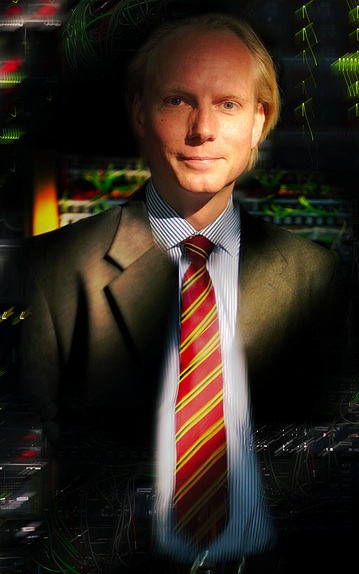IT revolution: a trend to beware of…
 The IT revolution has benefited the broadcasting industry in terms of reduced costs and greater connectivity and versatility, but has it been an entirely benign influence? Simen Frostad, chairman of Bridge Technologies, attempts an answer.
The IT revolution has benefited the broadcasting industry in terms of reduced costs and greater connectivity and versatility, but has it been an entirely benign influence? Simen Frostad, chairman of Bridge Technologies, attempts an answer.
Anyone with even a passing familiarity with the IT industry knows all too well the stories of hubristic projects conceived on a grand scale with budgets running into billions of dollars, with completion dates years – even decades – into the future. Schemes for rationalising government departments or making public services more efficient at the point of delivery usually promise the world, but many end in expensive failure.
Is a tendency to over-reach and over-complicate a characteristic of the IT industry that broadcasters and media people should be wary of? There’s something about working in IT that seems to make people love complexity, seemingly for its own sake. Perhaps there’s a more calculating aspect at an organisational level: the more complex a ‘solution’ is, the more work it creates for the providers of the solution. But it’s almost as if after a few years in IT, an otherwise normal human being forgets the importance of simplicity, or at least forgets where to find it.
I don’t mean to be too critical here, because nearly every big IT innovation seeks to solve enormously complicated challenges. There’s no way around that: significant invention always involves intricacy, minute detail and complexity. But the best inventions also have an intuitive quality and some have an essential simplicity that makes us wonder ‘how come nobody thought of that before?’. What the media industry needs to be careful about, now that IT is so much a part of it, is the tendency of IT people to convert us all to a currency of complexity, as if there were no other legal tender.
Broadcasters were used to working with a fairly simple set of parameters in order to create their signals and get them to the viewer. The tools they used for monitoring and analysing these signals were mostly simple too: crude perhaps, but effective and easy to use. Now that the one-size-fits-all ‘broadcasting’ model has become superseded by diverse, multi-platform, social-media-connected, second-screen, live/on-demand consume-it-anywhere ‘media delivery’, much more varied and complex technologies are involved. And the people who make it all work are having a much more complicated time of it as a result.
The crux of this situation is that complexity should not be allowed to become the norm for the user in everyday operations. If it does, there will be some serious consequences for service quality and operational costs. Even if the technology under the hood is complicated, manufacturers still need to make the tools to run it easy to use. And there’s a tendency in IT-based, engineering-driven manufacturers not to focus on that.
When the stakes are high enough, tech manufacturers come through. An airliner’s cockpit is stuffed full of complex technology, but it’s presenting data in simple form. It has to be simple, because if a pilot can’t quickly understand the information the aircraft’s systems are delivering, it’s a potentially fatal situation.
The media industry has some pretty high stakes too. Not directly life-threatening maybe, but in the super-competitive race for new business, the difference between profitable operation and failure can hinge on operational costs in a way it never did before. If a media business is based on technology that its staff are constantly struggling to understand and manage, there’s trouble ahead.
Technical staff have to deal with the complexity of today’s diverse IT-based media systems: that’s just a fact of life. But they don’t have to put up with tools that are complicated and opaque to use. Manufacturers should work hard to resist placing that burden on them, and instead deliver products that make complexity understandable at a glance.
It’s hard to make the complex simple, but manufacturers of IT technology for media use need to make the extra effort.
